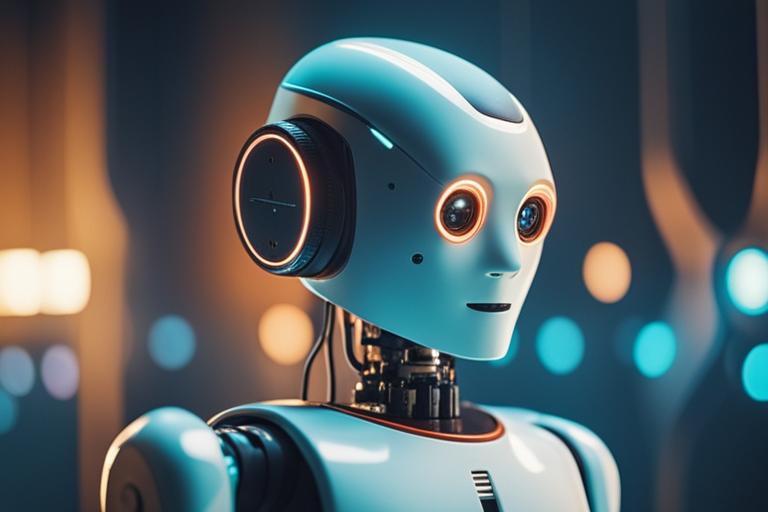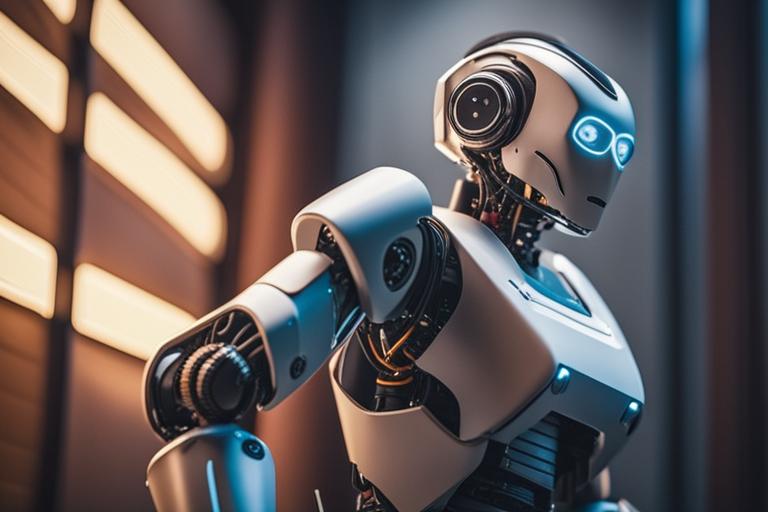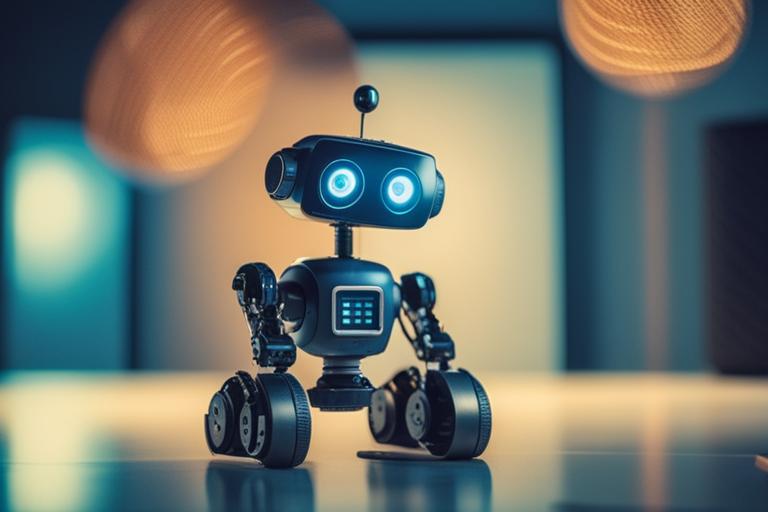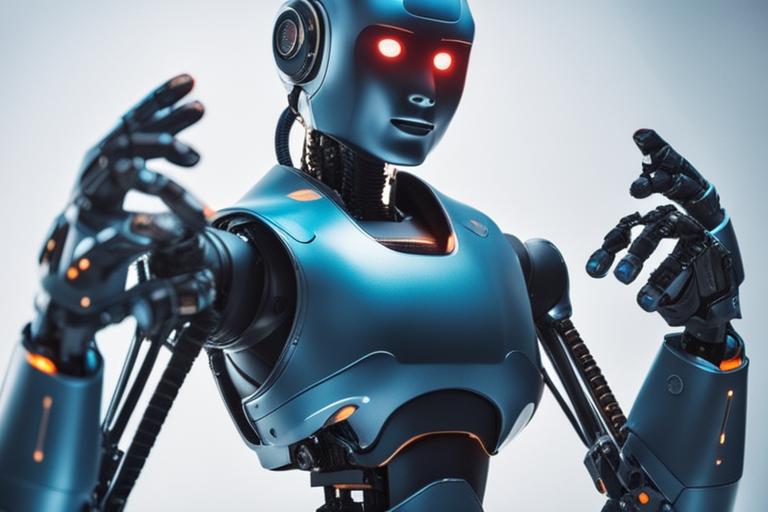
Learn about the Role of AI Software in Robotics
By reading this article, you will learn:
– How AI software enhances robotic systems and impacts industries like manufacturing, healthcare, and transportation.
– The application of machine learning in robotics and its role in improving robotic capabilities.
– The ethical considerations and safety implications of AI integration in robotics.
What role does AI software play in the field of robotics? Artificial Intelligence (AI) software plays a pivotal role in the evolution of robotics, transforming the capabilities of robotic systems and paving the way for groundbreaking advancements. The integration of AI software in robotics represents a paradigm shift, enabling robots to perceive, learn, and make decisions in ways that were previously inconceivable. This article delves into the multifaceted impact of AI software on robotics, exploring its significance, applications, challenges, and future prospects.
Machine Learning in Robotics
Application of Machine Learning Algorithms in Robotics
One of the fundamental contributions of AI software to robotics is the application of machine learning algorithms. These algorithms empower robots to analyze and adapt to complex data sets, enabling them to learn from experience and improve their performance over time. By incorporating machine learning, robots can refine their capabilities autonomously, leading to more efficient and adaptive behaviors in various tasks.
Adaptive Learning and Its Role in Improving Robotic Capabilities
AI software facilitates adaptive learning in robotics, allowing robots to dynamically adjust their behavior based on changing environmental conditions and novel stimuli. This capability is instrumental in enhancing the versatility and responsiveness of robotic systems, enabling them to operate effectively in dynamic and unpredictable environments.
Examples of Machine Learning Applications in Robotics
Machine learning algorithms are employed in diverse applications within robotics, such as autonomous navigation, object recognition, and decision-making processes. For instance, in autonomous vehicles, AI-driven machine learning enables real-time analysis of traffic patterns and road conditions, contributing to safer and more efficient navigation.
| Machine Learning Applications in Robotics | Examples of Machine Learning Applications in Robotics |
|---|---|
| – Empowers robots to analyze and adapt to complex data sets | – Autonomous navigation |
| – Enables robots to learn from experience and improve performance over time | – Object recognition |
| – Refines capabilities autonomously | – Decision-making processes |
Sensing and Perception

Enhancing Sensing and Perception Abilities through AI Software
AI software enhances the sensing and perception abilities of robots, enabling them to interpret and respond to environmental stimuli with heightened accuracy and efficiency. By leveraging advanced sensor technologies and AI algorithms, robots can perceive and comprehend their surroundings in a manner that closely emulates human cognitive processes.
Interpretation and Response to Environmental Stimuli by Robots
Robots equipped with AI-powered sensing and perception capabilities can interpret complex environmental stimuli, such as visual, auditory, and tactile inputs, and respond appropriately. This capability is pivotal in enabling robots to interact with their surroundings in a meaningful and purposeful manner, facilitating a wide range of applications in industrial, commercial, and societal settings.
Advancements in AI-Powered Sensing Technologies
The integration of AI software has catalyzed significant advancements in sensing technologies for robotics, enabling the development of sophisticated sensors capable of capturing and processing nuanced environmental data. These advancements have far-reaching implications for robotics, empowering robots to operate in intricate and unstructured environments with unprecedented precision and reliability.

AI software plays a central role in enabling autonomous navigation in robotics, empowering robots to navigate and operate independently in complex and dynamic environments. By integrating AI algorithms, robots can analyze sensor inputs and environmental data in real time, enabling precise and adaptive navigation capabilities.
Decision-Making Based on Sensor Inputs and Environmental Data
AI-driven autonomous navigation involves sophisticated decision-making processes that leverage sensor inputs and environmental data to determine optimal navigation paths and responses to dynamic obstacles. This capability is fundamental in enabling robots to operate safely and efficiently in diverse real-world scenarios, ranging from industrial settings to public spaces.
The integration of AI software for autonomous navigation confers several advantages, including enhanced safety, improved efficiency, and expanded operational capabilities for robotic systems. By leveraging AI-driven navigation, robots can overcome complex navigational challenges and contribute to diverse applications, including logistics, exploration, and surveillance.
Object Recognition and Manipulation

Role of AI in Enabling Object Recognition by Robots
AI software empowers robots with advanced object recognition capabilities, enabling them to identify and interact with diverse objects in their environment. Through the integration of computer vision and machine learning, robots can discern and manipulate objects with precision and dexterity, opening new frontiers in manufacturing, logistics, and service-oriented tasks.
Advancements in Computer Vision and Robotic Manipulation Techniques
The synergy between AI software, computer vision, and robotic manipulation techniques has led to remarkable advancements in the field of object recognition and manipulation. Robots equipped with AI-powered vision systems can accurately perceive and manipulate objects, revolutionizing tasks such as assembly, sorting, and material handling in industrial and commercial settings.
Implications of AI-Powered Object Manipulation in Robotics
The incorporation of AI-driven object manipulation capabilities has far-reaching implications for robotics, transcending traditional limitations and enabling robots to undertake intricate and delicate tasks with precision and finesse. This transformative capability has profound implications for industries such as manufacturing, healthcare, and logistics, driving efficiency and innovation.
Decision Making and Planning
Utilizing AI Algorithms for Decision-Making and Planning in Robotics
AI algorithms play a pivotal role in facilitating decision-making and planning processes in robotics, enabling robots to optimize their actions based on complex data sets and dynamic environmental conditions. By leveraging AI for decision-making, robots can make informed and adaptive choices, enhancing their autonomy and operational efficacy.
Optimization of Robot Actions Based on Complex Data Sets
AI software empowers robots to optimize their actions by analyzing vast and intricate data sets, enabling them to make decisions that are aligned with predefined objectives and situational constraints. This capability is instrumental in enhancing the precision and efficacy of robotic operations across diverse domains, from industrial automation to service-oriented tasks.
Examples of AI-Driven Decision-Making in Robotic Systems
AI-driven decision-making is exemplified in various robotic systems, such as autonomous drones, industrial robots, and collaborative robots used in healthcare and research. These systems leverage AI algorithms to analyze sensory data, assess environmental conditions, and make decisions that optimize their actions in real time, leading to enhanced performance and adaptability.
Human-Robot Interaction

Facilitating Natural and Intuitive Interactions through AI Software
AI software facilitates natural and intuitive interactions between humans and robots, enabling seamless communication and collaboration in diverse settings. By integrating natural language processing and gesture recognition capabilities, robots can engage with humans in a manner that is conducive to effective cooperation and shared task execution.
Advancements in Natural Language Processing for Human-Robot Communication
The integration of AI-powered natural language processing has led to significant advancements in enabling robots to comprehend and respond to human speech in natural and conversational contexts. This capability is pivotal in fostering productive human-robot interactions in scenarios such as customer service, healthcare assistance, and collaborative manufacturing.
Gesture Recognition and Its Role in Enhancing Human-Robot Interaction
AI-driven gesture recognition technologies empower robots to interpret and respond to human gestures, enabling seamless and nonverbal communication between humans and robots. This capability enhances the versatility and adaptability of human-robot interaction, paving the way for intuitive and efficient collaboration in diverse applications, including assistive robotics and interactive exhibits.
Ethical and Safety Considerations
Addressing Ethical Implications of AI Integration in Robotics
The integration of AI in robotics necessitates a nuanced consideration of ethical implications, encompassing aspects such as privacy, accountability, and societal impact. It is imperative to address ethical considerations to ensure that AI-powered robotic systems are developed and deployed in a responsible and conscientious manner.
Importance of Responsible Development and Deployment of AI-Powered Robots
Responsible development and deployment of AI-powered robots entails adhering to ethical frameworks, regulatory standards, and best practices that safeguard human safety, privacy, and well-being. By prioritizing ethical considerations, the robotics industry can foster public trust and confidence in the utilization of AI-driven robotic systems across diverse domains.
Ensuring Safety in AI-Driven Robotic Systems
Safety considerations are paramount in the integration of AI software in robotic systems, necessitating robust mechanisms for hazard detection, risk mitigation, and fail-safe protocols. By prioritizing safety, the robotics community can ensure that AI-driven robots operate in a manner that minimizes potential hazards and augments overall safety in industrial, commercial, and societal contexts.
Future Prospects
Emerging Trends and Future Developments in AI Integration in Robotics
The future of AI integration in robotics is marked by a convergence of emerging trends, including advancements in AI algorithms, sensor technologies, and human-robot collaboration. These trends are poised to shape the trajectory of robotics, unlocking new capabilities and applications that transcend current limitations and drive innovation across diverse industries.
Potential Impact on Industries such as Manufacturing, Healthcare, and Transportation
The integration of AI software in robotics holds profound implications for industries such as manufacturing, healthcare, and transportation, fostering transformative advancements in automation, medical robotics, and autonomous mobility. These developments are poised to reshape industry landscapes, driving efficiency, safety, and quality of service through AI-powered robotic systems.
Predictions for the Future of AI-Powered Robotics
As AI continues to evolve, the future of AI-powered robotics is characterized by increasingly sophisticated and adaptive robotic systems that redefine the boundaries of automation and human-robot collaboration. The proliferation of AI-driven robotics is anticipated to catalyze a paradigm shift, ushering in an era of unprecedented innovation and societal impact.
Real-Life Impact of AI in Robotics
A New Era of Manufacturing Efficiency
In a bustling manufacturing plant, Sarah, the production manager, was facing challenges in optimizing the assembly line for increased efficiency. With the integration of AI software in robotics, she witnessed a significant transformation in the manufacturing process. The robots equipped with AI-powered autonomous navigation efficiently maneuvered through the production floor, adapting to the dynamic environment and avoiding obstacles without any human intervention.
The AI-driven decision-making capabilities of the robots also played a crucial role in streamlining the production flow. By analyzing complex data sets in real-time, the robots made split-second decisions, optimizing their actions and minimizing downtime. This resulted in a remarkable increase in productivity and a significant reduction in manufacturing costs for the company.
Sarah’s experience demonstrates the real-life impact of AI in robotics, showcasing how the seamless integration of AI software has revolutionized manufacturing processes, paving the way for a new era of efficiency and productivity.
Case Studies and Applications
Real-World Examples of AI Software in Robotics
Real-world applications of AI software in robotics encompass diverse domains, including autonomous vehicles, industrial automation, medical robotics, and assistive technologies. These applications showcase the tangible impact of AI on robotic systems, demonstrating how AI-driven capabilities enhance efficiency, safety, and adaptability in real-world scenarios.
Successful Applications and Benefits of AI-Driven Robotic Systems
The successful integration of AI software in robotic systems has yielded tangible benefits, ranging from enhanced productivity and operational efficiency to breakthroughs in personalized healthcare and sustainable resource management. These applications underscore the transformative potential of AI-powered robotics across diverse sectors, driving innovation and societal value.
Impact of AI on Different Fields, Including Manufacturing, Healthcare, and Transportation
The impact of AI on diverse fields is exemplified by its role in revolutionizing manufacturing processes, enabling precision medicine through medical robotics, and facilitating autonomous transportation solutions. These applications highlight the versatility and far-reaching implications of AI-powered robotics, underscoring its significance in shaping the future of industries and societal well-being.
Challenges and Limitations
Addressing Challenges and Limitations of AI Software in Robotics
The integration of AI software in robotics is accompanied by inherent challenges and limitations, including ethical considerations, technical constraints, and societal implications. It is imperative to address these challenges proactively to harness the full potential of AI-powered robotics while mitigating associated risks.
Identifying Areas for Improvement and Ongoing Research in the Field
Ongoing research in AI-powered robotics focuses on addressing technical limitations, refining ethical frameworks, and enhancing the adaptability and safety of robotic systems. By identifying areas for improvement and investing in interdisciplinary research, the robotics community can drive continuous advancements in AI integration while addressing existing limitations.
Balancing Technological Advancements with Ethical and Societal Considerations
Balancing technological progress with ethical and societal considerations is a fundamental imperative in the evolution of AI-powered robotics, ensuring that advancements align with ethical norms, societal values, and human well-being. This harmonious balance is essential for fostering trust, acceptance, and responsible utilization of AI-driven robotic systems in diverse contexts.
Matthew Harrison is a robotics expert with over 15 years of experience in the field. They hold a Ph.D. in Robotics and Artificial Intelligence from Stanford University, where their research focused on the application of machine learning algorithms in robotic systems. As an active member of the Institute of Electrical and Electronics Engineers (IEEE) Robotics and Automation Society, Matthew Harrison has published numerous papers in top-tier journals, exploring the intersection of AI software and robotics.
Their work has been cited in several industry-leading publications, and they have been a keynote speaker at international conferences on robotics and AI. Matthew Harrison has also collaborated with renowned institutions such as MIT and NASA on projects involving autonomous navigation and human-robot interaction. Their expertise in ethical considerations related to AI integration in robotics is evident through their advisory role in governmental committees and industry panels. With a deep understanding of the challenges and future prospects of AI-driven robotics, Matthew Harrison brings a wealth of knowledge to the subject.

Leave a Reply